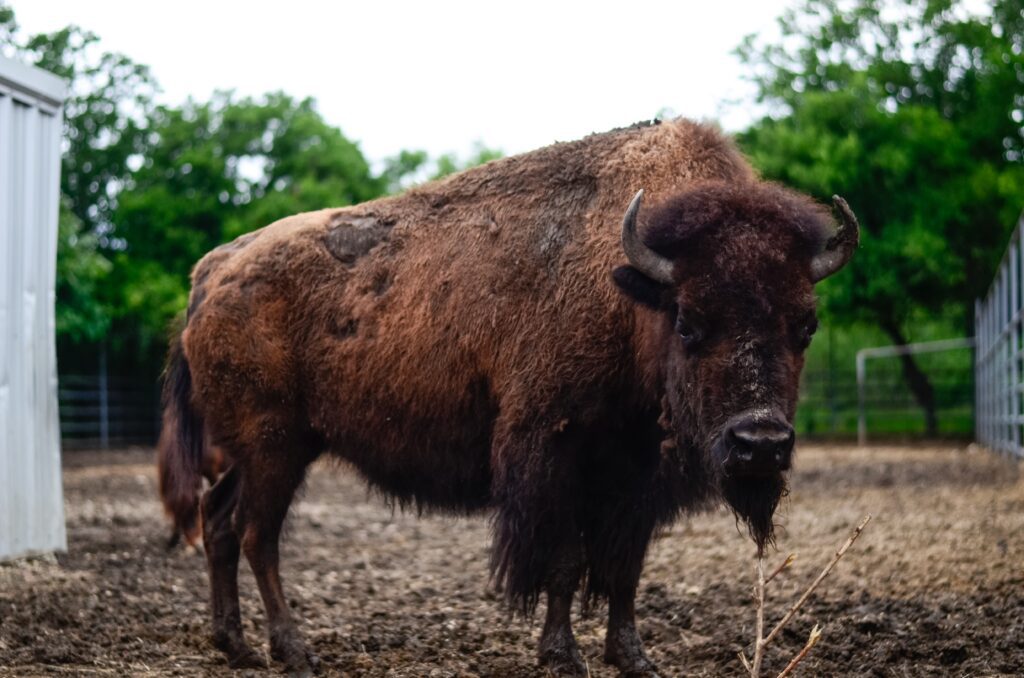Our featured animal for the month of November is the North American bison, the largest mammal on the continent. We have decided to celebrate these majestic creatures all month long in honor of National Bison Day on November 5th. In an effort to jumpstart this month’s celebration of our featured animal, we will be sharing plenty of fun facts about the large mammal as well as photos that are sure to remind you that even the largest animals can be quite adorable and even endearing.
Make sure to visit our bison during your next visit to the Zoo. Reserve your tickets here!
Bison Photos And Facts That Will Make You Appreciate Them Even More!
Before we can truly appreciate these bison in all their natural glory, we would like to share a few interesting facts that are sure to enrich your understanding and admiration of these wonderful animals. For starters, did you know that bison are the official mammal of the United States? While these majestic mammals have been around for roughly 2.6 million years, they were formally recognized as the official mammal of the continent in 2016 when President Obama signed the National Bison Legacy Act into law. This was primarily done since bison are widely considered a notable historical symbol of the United States.
Now that we have established just how crucial this mammal is historically and nationally, here are some facts about how you can tell male and female bison apart. Male bison (also referred to as bulls) can weigh up to 2,000 lbs while female bison (referred to as cows) generally weigh up to 1,000 lbs. Due to this notable weight difference, it should not be too difficult to tell male and female bison apart. As a reference, a female bison is a little smaller than the average cow. Here are some incredible bison photos; try to see if you can differentiate our male bison from our female bison!
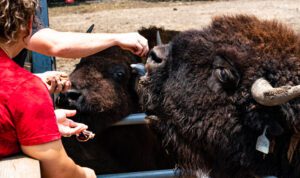
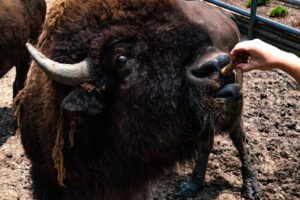
Some Of The Most Unbelievable Facts About Bison
We have just covered some general facts about bison, and would now like to turn to some additional bison facts that many of our guests find too incredible to believe. One of these facts is that these animals are actually quite fast! While creatures of such a formidable size tend to be slow due to all the extra weight they carry around, bison can run anywhere from 30 to 45 mph and can even jump as high as 6 feet in the air. And that’s not all! These large mammals are also impeccable swimmers. This fact can be particularly hard to believe since bison have very thick fur coats, but they are able to remain afloat despite their formidable size due to their ability to keep their heads, humps, and tails above the water’s surface.
As National Bison Day quickly approaches, we sincerely hope you can make some time in your busy schedule to celebrate these wonderful creatures with us! Our animal-loving staff regularly goes above and beyond in making each of our animal residents feel special, from intimate, one-on-one care to fun enrichment opportunities on special days like National Bison Day. Make sure to stop by our bison show to get some bison photos of your very own!
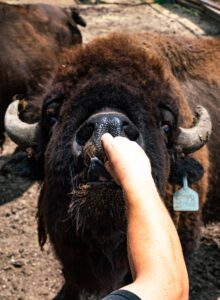
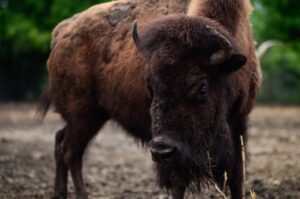
Bison Or Buffalo: What’s The Difference?
It is now time to discuss one of the most frequently asked bison questions we receive from our guests: “What’s the difference between bison and buffalo?” While these two animal terms are often used interchangeably, there is a considerable difference between them as distinct mammals that inhabit different regions. One of the first things you should consider when distinguishing whether an animal is a bison or buffalo is their signature curved horns. While bison typically have small horns that point upward, buffaloes have large horns that often curl inward like a handlebar mustache that can measure up to 6 feet in length! Another physical feature that distinguishes the two mammals is whether or not they have a hump. Bison have large humps at their shoulders, whereas buffaloes do not. In other words, when in doubt, be sure to consider the three Hs: home, horns, and hump.
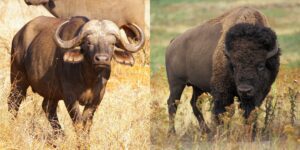
Now that we have cleared up this huge misunderstanding, here are some more incredible facts about this formidable mammal. This time, we will be focusing on fun facts about bison calves! One particularly interesting fact is that bison calves are not born with their signature humps. Rather, newborn calves have reddish, light brown coats and look more like baby cows. After being nursed and nurtured by their moms for the first year of their lives, bison calves become fully independent. This leads us to one of our personal favorite bison facts— due to their reddish coats, bison calves are commonly referred to as “red dogs” despite looking nothing like dogs! Be sure to participate in our interactive bison feeding show to put your newfound knowledge to the test when you meet the amazing bison that call Animal World and Snake Farm Zoo home. You are sure to learn even more fun facts about bison and our other amazing animals during your next visit!
Come Meet Our Adorable Baby Bison!
If you visited us toward the end of the summer, you would know that the Zoo welcomed an adorable baby bison zooborn near the end of August named Teddy! Since Teddy is still nursing and heavily dependent on his mother, now is the perfect time to visit him at our expansive bison yard. He loves to nibble on grass and is always so excited when our guests take time out of their days to visit him! Be sure to see our bison family in all their majestic and endearing glory during your next visit to the Zoo. They can’t wait to meet you!
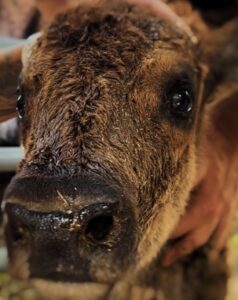
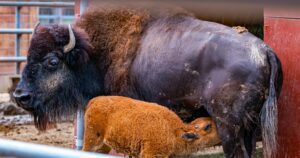
Follow us on TikTok for all the fun animal content you could ever ask for!

